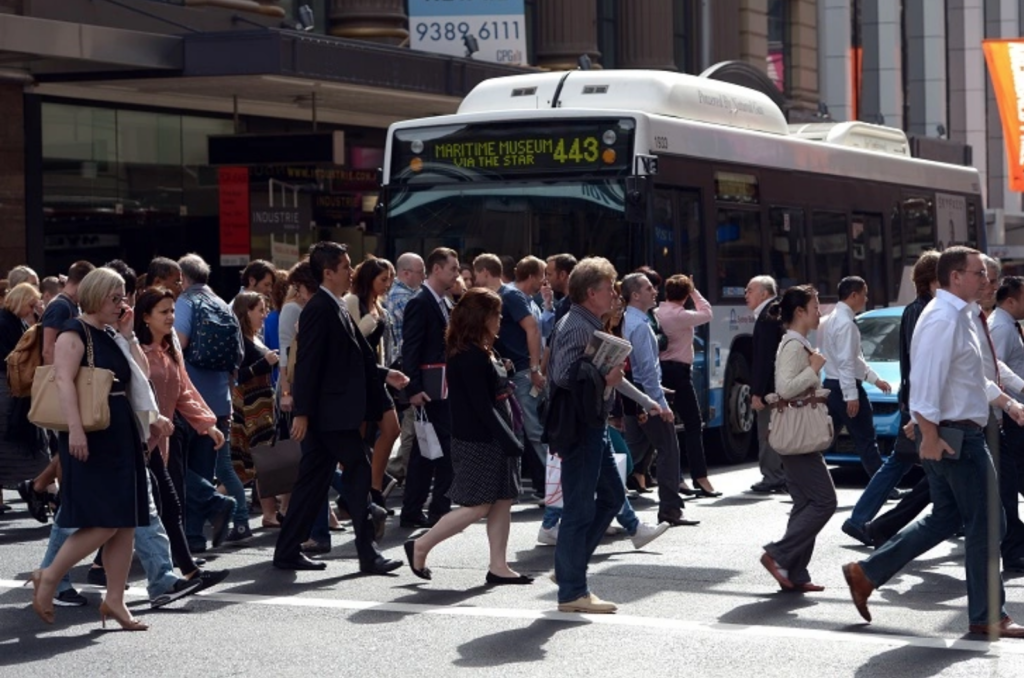
Article by Daniel Wilde courtesy of Spectator Australia.

Australian families are feeling the pinch of the cost-of-living crisis gripping the nation as inflation, record energy bills, and housing costs and rents skyrocket.
The federal government is throwing fuel to this fire by adding more people than the population of Tasmania to our nation over the next two years.
This unsustainable blow-out to migration, tipped to reach a whopping 650,000 extra people in the next two years, will put further pressure on our already struggling transport, health, and education systems, and exacerbate acute housing shortages.
The notional reason given for this new migrant surge is Australia’s current worker shortage crisis. While Australia will always be a welcoming country, it should not be forgotten we already have the second-highest share of population born overseas in the developed world, behind only Luxembourg. Yet, at present, we have not invested sufficiently in the infrastructure we need to house such a large wave of new arrivals.
New data from the Australia Bureau of Statistics reveals there are more than 438,000 job vacancies across Australia, with almost a quarter of Australian businesses reporting a labour shortage. The level of job vacancies today represents a tripling of pre-Covid levels.
Previous analysis by the Institute of Public Affairs has found current job vacancy levels in Australia are costing Australians $32 billion in lost wages each year, and the federal government almost $7 billion in forgone income tax revenue.
If there was sufficient labour supply to meet the demand, that revenue could be used to invest in our critical infrastructure such as roads, schools, and hospitals fit for purpose, or to help pay off our ever-increasing national debt.
Rather than taking the short-sighted, lazy approach of more migration to spur economic growth, governments must act urgently to get Australian pensioners, veterans, and students into the workforce.
Currently, only 3 per cent of pensioners work in Australia, compared to 25 per cent in New Zealand. This is not because pensioners in Australia do not want to work. Research has shown that around one in five want to work, but do not, because of unfair tax and red tape barriers. The pool of pensioners who want to work equates to approximately 500,000 Australians, more than enough to fill current job vacancies.
Today, an age pensioner or veteran can only earn $226 per week before their benefits start to be reduced by 50 cents on the dollar. It is a punishment for those who have the skills, ability, and desire to make a contribution.
Australian students also face tax and red tape barriers to work, with almost half a million young Australians not working, studying, or in training of any kind. Only one in two Australians students are in work, compared with eight in ten who are not studying. A major reason behind this is that once students earn $270 a week, they lose benefits at rate of 60 cents in the dollar.
The federal government claim they have dealt with the matter. Last December, legislation was passed that allowed pensioners to earn an extra $76 dollars per week before they start to lose their benefits. But the evidence is in, and this minor tinkering around the edges has, as warned, failed. The latest data from the Australian Bureau of Statistics shows that, since the government’s changes were introduced, total worker shortages have declined by a measly one per cent.
The solution is to follow New Zealand’s approach by removing all red tape on pensioners, students, and veterans. This would mean that these Australians could earn as much income as they would want, without losing their pension payments or welfare benefits. Of course, they would still pay income tax like every other Australian worker.
Removing all red-tape and barriers for Australian pensioners, veterans, and students to get back into the workforce, without suffering significant financial penalties, is a simple and effective policy measure that is good for them and good for our nation.
More Australians working means higher government revenue through income tax, GST, and payroll tax, which can be reinvested into infrastructure and used to pay down our debt.
Pensioners, veterans, and students will be able to work more, which is a critical source of dignity, esteem, and social connection, and businesses will be able to draw on a larger pool of workers, which will put downward pressure on costs, inflation, and cost of living, which will increase investment.
Daniel Wild is the Deputy Executive Director at the Institute of Public Affairs















